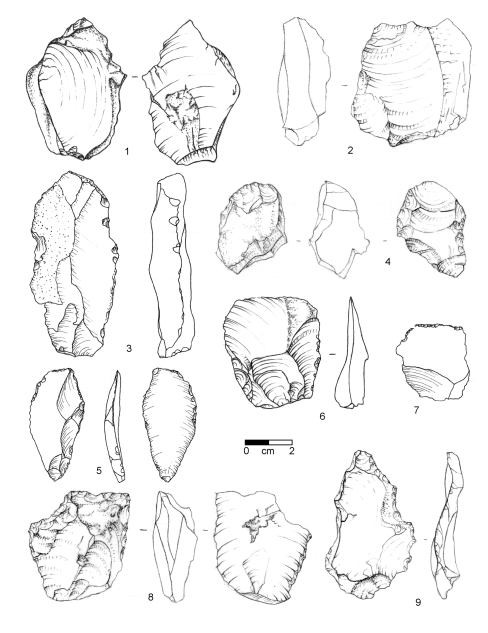Industrial Variability - The Tayacian
Initially we were interested in re-excavating Fontechevade to better understand the Tayacian, an industry generally defined by its crudeness and lack of diagnostic features. However, it soon became apparent that this would be difficult to do as stone tools were very poorly represented in the site's deposits (we had 850 artifacts in five cubic meters or less than one artifact per 7 liter bucket of sediment - artifacts coming from the screens were about the same). We then considered that perhaps the portion of the site we excavated was not representative of what Henri-Martin had previously excavated, and so we went to Paris to study her collections. However, while her published collections appear to be quite large, it turns out that most of what she saved cannot be considered artifactual (of 7835 artifacts examined by us more than 5000 could not be considered actual artifacts). When we also compare other statistics characterizing her assemblage and ours, they are not terribly different (except some size bias her her collections)
Thus when we consider site formation issues plus the nature of the collection, it seems that the Tayacian is not an industry at all (or least Fontechevade is not a good example of it). Rather, the Tayacian, as defined by Fontechevade, is a product mainly of site formation processes that mixed actual artifacts with a huge number of natural clasts and some artifacts from the landscape that came with the deposits that filled the cave.
